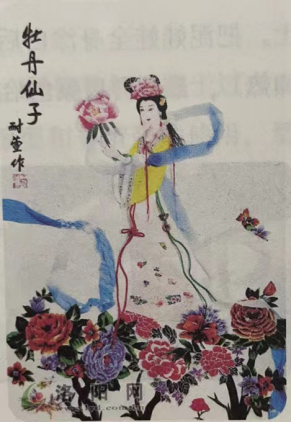申报地区:涧西区 2011年12月 第3批

丝绫堆绣(布贴)起源于隋唐时期的洛阳宫廷补绣,后经河洛地区的民间巧妇绣女通过言传身教和口耳相传,传承留存至今,已有1000多年的历史。丝绫堆绣用材十分讲究,大多采用软缎织锦堆贴,因为其原材料以布料居多,因此在洛阳地区民间俗称为“布贴画”,又称布堆画、布贴花、布摞花和拨花。
堆锦是洛阳民间巧女、刺绣能手在长期的丝绫堆绣实践中,融合了传统民间剪纸、刺绣、壁画、国画(工笔画、人物画)等工艺特点,并在此基础上,从生活出发,就地取材,采用不同色彩、不同质地、不同形状的布块,通过布缝和补花布饰手工艺,创造出具有浓郁地方乡土气息和生活气息的丝绫堆绣(布贴)作品,其画面具有浮雕感和层次感。色彩丰富鲜艳,剪贴边线明朗整洁,题材丰富多彩,具有木刻版画的刀工特点,具有浓郁的河洛地域文化气息和生活气息。
传承人王耐萓女士祖籍偃师市老城,现年78岁,母亲寇建祥(生于1909年)和姑姑王云是当时偃师县远近闻名的丝绫堆绣高手和刺绣能手,寇建祥女士从小就跟从其母亲寇建祥和姑姑王云学习丝绫堆绣技艺。在她们的言传身教下,王耐萓女士很快就熟练掌握了丝绫堆绣技艺,并能长期从事堆绫艺术创作,至今已历60多年。

Silk Barbola(Cloth Paste Painting), with a history of more than 1,000 years, originated from Luoyang palace in the Sui and Tang Dynasties, and was passed down and preserved by the folk embroidery women in Heluo area by word of mouth and behaviors. The materials used for silk barbola are very particular, and most of them are soft satin brocade. Because the raw materials are mostly cloth, it is commonly known in Luoyang as"Cloth Paste Painting", which is also called Cloth Barlola Painting and Cloth Paste Flower. Wang Naxuan, the producer of silk pile brocade in the picture, is 78 years old, whose ancestral home is Yanshi of Luoyang City. Her mother Kou Jianxiang (born in 1909)and aunt Wang Yun were famous silk barbola master and embroidery artist in Yanshi County at that time. Ms. Kou Jianxiang followed her mother and aunt to learn the technique of silk barbola from childhood, and quickly mastered the technique. She has engaged in the artistic creation of cloth paste painting for more than 60 years.
